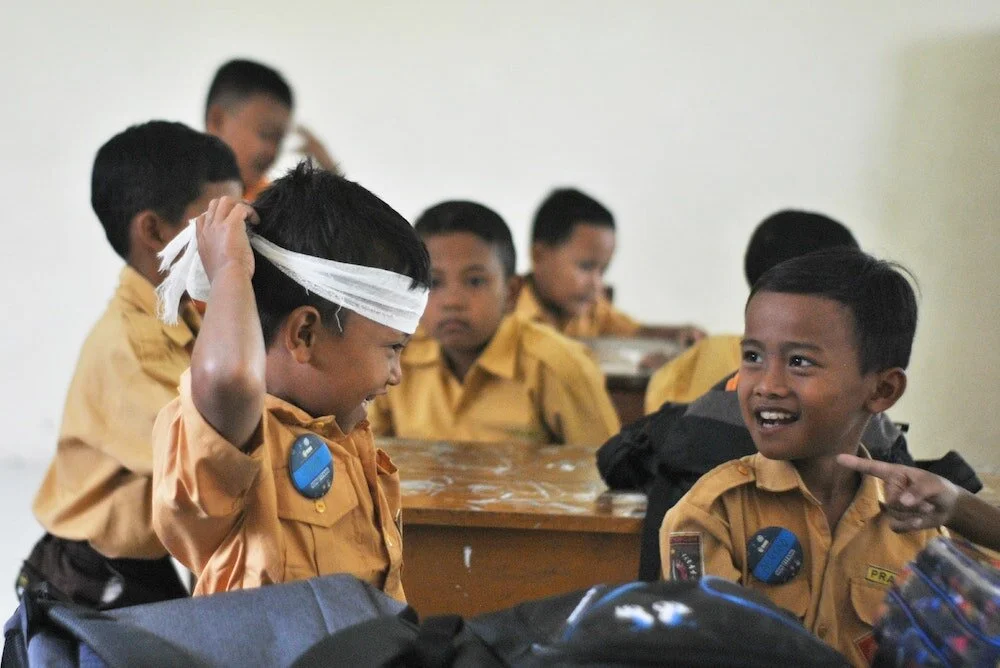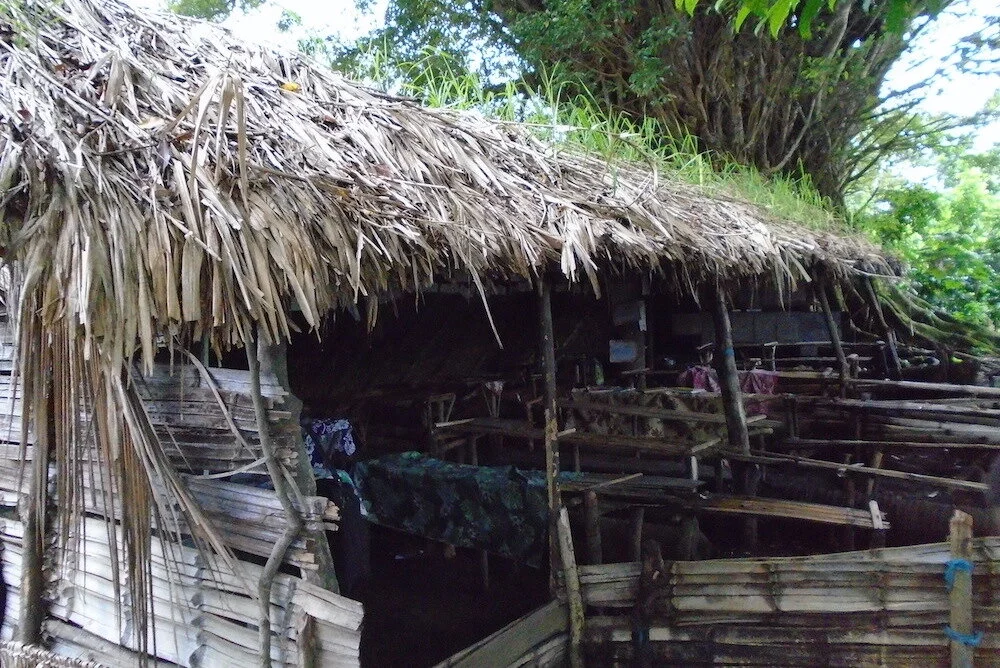The Development of Teaching and Social Learning Across Cultures
This project is a large, international, collaborative, cross-cultural project studying how culture influences the development of cognition over childhood. We are particularly interested in understanding how the capacities to learn from and teach others are impacted by the unique cultures in which children grow up in.
Humans have a wider repertoire of socially transmitted knowledge, technology, and skills than any other animal species. Computers, smartphones, and modern medicine are examples of cumulative culture, innovations that build on each other and are transmitted across generations. Two of the key mechanisms making this transmission possible are learning and teaching. Our capacity for cumulative culture is widely recognized as one of the most important contributors to humanity’s remarkable success, allowing us to adapt to novel and dynamic challenges and inhabit every corner of the planet.
The objective of this international research project is to document cultural variation in the cognitive and cultural processes underpinning cumulative culture: teaching and social learning. This project has been conducted in 12 countries: USA, Mexico, Brazil, Colombia, Ecuador, Ghana, Ethiopia, the Democratic Republic of the Congo, India, Malaysia, Australia, and Vanuatu. We are studying how both parent and peer teaching practices, and children’s social learning capacities, contribute to the development of cumulative culture. To accomplish this, we have three main goals.
Goal 1: To build a collaborative network of international researchers
A core impediment to large-scale cross-cultural research is developing the infrastructure to conduct systematic research in diverse populations. This requires coordinating many scientists and research assistants spread across many time zones and countries in multiple languages. Our team consists of scientists from international institutions and diverse disciplines working together in a coordinated network spanning five continents.
We combine our expertise to provide unique insights into optimal ways of studying culturally specific behaviors. We work closely with local community members in our sites, providing them with the training and skills to contribute to the project through data collection and protocol refinement. One of our goals is to establish long-term scientific collaborations that allow for deep insights into cognitive change over development.
Goal 2: Document cultural variation in children’s social learning and parent and peer teaching
Across the globe, learning and teaching occur in many different environments. Culture-specific practices, beliefs, and attitudes may have a marked impact on how children learn from others. For example, children who go to school from a young age have vastly different learning experiences, including their interactions with peers and teachers, than children who do not.
We developed a comprehensive and systematic battery of cognitive and social developmental tasks to study how children copy and teach each other. This project includes tasks in which children are required to learn how to solve novel puzzles, regulate their behaviors, or teach others a recently learned skill, such as knot-tying. Recording these behaviors allows us to address several questions, including: Does culture impact to what extent children copy others? What are the different ways that children and caregivers across populations teach skills? The same experimental task battery is used across all sites to allow us to make direct comparisons across populations. Addressing these questions will help to explore and document the diversity of learning and teaching methods used by humans worldwide.
Goal 3: To study the impact of formal education on children’s social learning and teaching
Formal education is a structured and systematic form of social transmission, delivered to students by trained teachers. Access to formal education is expanding globally, which is significantly shaping childhood experiences. What will the implications of this expanding access be? How will this impact children’s cognitive development? School attendance has a marked impact on a diverse range of cognitive processes including executive functions, self-regulation, creativity, and memory. We aim to understand how schooling impacts the psychological processes supporting cumulative culture.
By studying populations with varying participation in, and access to, formal education, we aim to measure whether, and how, it shapes children’s learning and teaching behaviors. In addition to the experimental data above, we collected information on children’s numeracy and literacy, how long they had attended school, general school attendance, and parental education. We will assess how these factors contribute to children’s learning and teaching practices.
Current Studies
Cultural variation in the development of tool innovation
A key aspect of cumulative cultural evolution is innovation. Innovations can include modifications to an existing technology or procedure that end up being useful. While the technologies we use daily are evidence of the many innovations that shape the human experience, we have a great deal to learn about the developmental origins of innovation. We seek to understand the development of children’s tool innovation and how it varies as a function of formal education.
Cultural variation in the development of self-regulation
Self-regulation allows us to adapt and respond flexibly to our environment. We are studying the development of children’s self-regulation using the Head, Toes, Knees, Shoulders task (HTKS). We are currently studying children’s performance on this task and how it varies as a function of formal education.
Previous Studies
Toddlers, tools, and tech: The cognitive ontogenesis of innovation
The development of tool innovation presents a paradox. How do humans have such diverse and complex technology, ranging from smartphones to aircraft, and yet young children find even simple tool innovation challenges, such as fashioning a hook to retrieve a basket from a tube, remarkably difficult? This study proposes that the solution to this paradox is the cognitive ontogenesis of tool innovation. Multiple cognitive mechanisms work in concert at each step of the tool innovation process: recognizing the problem, generating appropriate solutions, and the social transmission of innovations. This is exemplified through a common measure of children’s tool innovation. The development of these mechanisms, and others such as EFs, creativity, and social learning, converge with age-related improvements in the ability to generate and implement appropriate solutions to tool innovation tasks. Social transmission of innovations is key to cumulative technological development and children exhibit a range of transmission biases facilitating effective and frequent dissemination of others’ innovations. Administration of multi-task batteries, longitudinally, is important for documenting developmental markers and individual differences in tool innovation. Research of this kind will shed light on the cognitive drivers of tool innovation and will, in turn, improve our understanding of why humans have the most varied and complex cultural technology on the planet.
The social side of innovation
Innovation is fundamental to cumulative culture, allowing progressive modification of existing technology. While typically defined as an asocial process, uninfluenced by social information, this study argues that innovation is inherently social—innovation is frequently the product of modifying others’ outputs, and successful innovations are acquired by others. Both the individual and group approaches to examining innovation are interesting and crucial avenues of investigation. The more these approaches are integrated, the more scientific value they hold.
The development of cumulative cultural learning
Human culture is unique among animals in its complexity, variability, and cumulative quality. Children inhabit cultural ecologies that consist of group-specific knowledge, practices, and technologies that are inherited and modified over generations. The learning processes that enable cultural acquisition and transmission are universal but are sufficiently flexible to accommodate the highly diverse cultural repertoires of human populations. Children learn culture in several complementary ways, including through exploration, observation, participation, imitation, and instruction. These methods of learning vary in frequency and kind within and between populations due to variation in socialization values and practices associated with specific educational institutions, skill sets, and knowledge systems. These processes by which children acquire and transmit the cumulative culture of their communities provide unique insight into the evolution and ontogeny of human cognition and culture.
Cumulative cultural learning: Diversity and development
The complexity and variability of human culture is unmatched by any other species. Humans live in culturally constructed niches filled with artifacts, skills, beliefs, and practices that have been inherited, accumulated, and modified over generations. A causal account of the complexity of human culture must explain its distinguishing characteristics: it is cumulative and highly variable within and across populations. We argue that the psychological adaptations supporting cumulative cultural transmission are universal but are sufficiently flexible to support the acquisition of highly variable behavioral repertoires. Variable transmission practices (teaching) and acquisition strategies (imitation) support cumulative cultural learning in childhood and examining flexibility and variation in caregiver socialization and children’s learning extends our understanding of evolution in living systems by providing insight into the psychological foundations of cumulative cultural transmission—the cornerstone of human cultural diversity.
Collaborators
- Project PI: Cristine Legare, Professor of Psychology and Director of the Center for Applied Cognitive Science
- Emily Messer, Former Postdoctoral Researcher
- Bruce Rawlings, Former Postdoctoral Researcher
- Oskar Burger, Director of Design & Development, Center for Applied Cognitive Science Manager
- Lydia Chen, Associate Director of Operations & Data Management, Center for Applied Cognitive Science
- Scott Calvert, Washington State University, Vancouver
- Barry Hewlett, Washington State University, Vancouver
- Sarah Pope, University of Texas at Austin
- Sheina Lew-Levy, University of Cambridge
- Frankie Tze-Kiet Fong, The University of Queensland
- Mark Nielsen, The University of Queensland
- Julia Watzek, University of Georgia
- Gairanlu Pamei, Indraprastha College for Women, University of Delhi
- Laura Shneidman , Pacific Lutheran University
- Cornelio Azarias Chay Cano, Instituto Mexicano de Tecnología del Agua
- Natalia Dutra, Federal University of Rio Grande do Norte
- Lara Gomes, Federal University of Rio Grande do Norte
- Sabrina Ghelardi, University of Texas at Austin
- Vivian Dzokoto, Virginia Commonwealth University
- Adote Anum, University of Ghana
- Gordon Ingram, Universidad de los Andes
- Juliet Carolina Castro Morales, Keralty Lazos Humanos
- Jessica Kingsford, Independent Researcher
- Micah Goldwater, University of Sydney, Australia
- Ciara Wirth, Stanford University, Department of Anthropology
- Luis Emilio Echeverria Rojas, Independent Researcher, Waorani Nation, Ecuador
- Emily Messer, The University of Texas at Austin, EvoLearn Lab
- Lydia Chen, The University of Texas at Austin, EvoLearn Lab
Funding
Funding for the project is provided by the National Science Foundation. Cristine Legare is PI on this grant.
Field Sites
- Austin, Texas, USA
- Tanna, Vanuatu
- Keningau, Malaysia
- Saltpond, Ghana
- Yucatan Peninsula, Mexico
- Natal, Brazil
- Facatativa, Colombia
- San Cristobal, Colombia
- Waorani Nation, Ecuador
- Bantu People, Republic of Congo
- Blue Mountains, Australia
- Manipur, India
- Asile, Ethiopia



